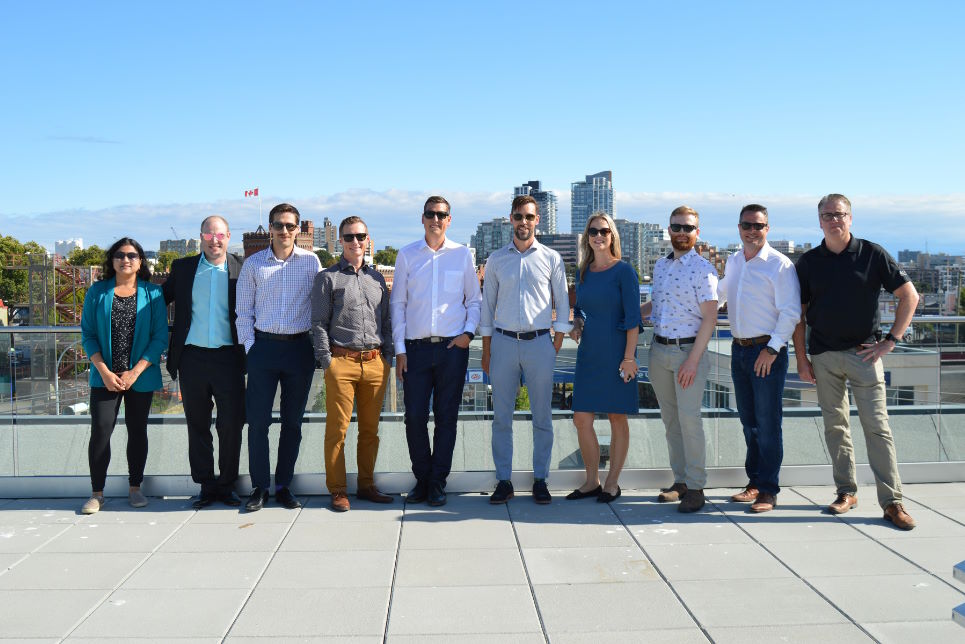Navigating Financial Turbulence: Alitis’ Fourth Quarter Market Outlook
In a world that’s become increasingly complex and unpredictable, our commitment is to offer our clients not just financial services but peace of mind.

As we enter the final quarter of this year, we gather to share insights, discuss strategies, and provide you with our perspective on the financial markets and how the present environment may impact your investments.
Quarterly Highlights
Our Alitis Investment Committee convenes regularly to evaluate the ever-changing landscape of investments and financial markets. Here are some key takeaways from our most recent meeting:
Money Costs Money: The New Reality
Inflation-protected bonds in both Canada1 and the US2 are now priced to achieve over 2% real returns over the long term. This is a significant shift from just a couple of years ago when they were priced to lose money after accounting for inflation. In today’s world, money indeed costs money, and this fact carries implications across the entire financial spectrum. We expect many investments will need to adjust to this new reality with re-pricing taking place over the foreseeable future.
Stability in Interest Rates and Inflation
While we can’t predict the future with absolute certainty, we believe that interest rates and inflation may be stabilizing. While we may not return to the extremely low pre-pandemic inflation rates, it’s unlikely that we’ll see rates as high as they were in the early 1980s. We may settle into a range similar to the early 2000s when inflation and interest rates were higher than we experienced pre-Covid, but not extreme.
Recession Warning
The prospect of a moderate recession looms on the horizon, but it’s important to note that it may not be as severe as those of the 1980s or 2008. It might resemble the early 2000s, after the tech bubble burst. While this could impact the stock market, we anticipate that the effects to be manageable. However, we do view it as prudent to prepare for an economic slowdown.

Navigating Stock Market Volatility
Stocks inherently carry higher risk during a recession. While the potential for high returns still exists, it is accompanied by increased risk. Alitis takes a value-based approach to public stock market investing, offering additional diversification through asset classes like private equity and infrastructure. These alternatives provide equity exposure with potentially less volatility than traditional stock indices. Nevertheless, we are keeping exposure to stocks to a minimal level.
Keeping an Eye on China and Japan
Uncertainty surrounds China, with undisclosed youth unemployment data and financial troubles in property development firms. The full consequences remain unclear, but it’s a situation we’re monitoring closely. On the other hand, Japanese stocks are gaining attention from investors and their currency is looking very undervalued, which does provide some opportunities, albeit with risk as noted previously.
Fixed Income Rebound
After a challenging year for bonds in 2022, fixed income now presents an attractive opportunity with lower risk than last year. It is our view that interest rates are likely close to their peak and a recession, if that comes to pass, should be favorable for bonds. To mitigate risk even further, we are looking to shift towards quality debt securities with less credit risk.

Resilience in Real Estate and Mortgages
Despite rising interest rates and an unpredictable real estate market, our alternative investments at Alitis continue to perform well. Investing in real estate at today’s rates may be challenging, but for those with locked-in financing, opportunity awaits. Much of the real estate in which we have invested has fixed rate mortgages, thus allowing value to be created as rents rise due to inflation. Additionally, non-traditional mortgages have continued to deliver solid returns. Most of the mortgages in the Alitis Pools are variable rate which has been very beneficial as interest rates have risen.
Our Tactical Asset Allocation
At Alitis, our clients’ financial well-being is paramount, and we reflect this commitment in our asset allocation strategy. Our flagship fund, the Alitis Income and Growth Pool, captures our outlook on the markets. During our recent investment committee meeting, we adjusted our allocations to better align with our market expectations. Some asset classes may require time to adapt to these new allocations, as liquidity varies, but our revised tactical asset allocation focuses on those asset classes we believe will perform best. The current tactical asset allocation for Alitis Income and Growth Pool favours fixed income, mortgages, and real estate while underweighting stocks:
- Cash & Equivalents: -3%
- Fixed Income: 30%
- Mortgages: 25%
- Stocks: 18%
- Real Estate: 30%
Alitis’ Approach to Investing
Alitis offers a diverse range of investment funds, designed to cater to the unique needs and circumstances of our clients. Our portfolio management approach involves allocating assets and investments that align with individual risk tolerance, investment horizons, liquidity requirements, and return expectations. Our investment offerings provide exceptional diversification and liquidity, utilizing a wide range of investments and advanced strategies while prioritizing robust risk management.
Our guiding principle at Alitis is to provide everyday investors access to financial opportunities typically reserved for the ultra-wealthy. We’ve identified three key aspects that the ultra-wealthy seek in their investments, and these principles guide our approach:
Preserve Wealth
The preservation of wealth takes precedence. We understand that effective risk management is critical to minimize losses, and it’s an area where we focus a great deal of attention.
Earn Solid Returns
The ultra-wealthy aim for their investments to earn solid, consistent returns that outpace inflation. We share this philosophy, focusing on delivering stable, predictable returns that empower our clients to achieve their financial goals.

A Personal Touch
Personalized, expert investment advice is crucial. At Alitis, you’ll work with a dedicated advisor who understands your unique requirements and crafts an investment portfolio tailored to your needs. We’re not a revolving door of advisors or proponents of faceless robo-advisors; we’re your trusted financial partner.
Conclusion
In the past 14 years, we’ve weathered a series of global financial storms, and volatility has become an integral part of investing. In uncertain times, diversification and time in the market are essential risk mitigation strategies.
Since our inception in 2009, Alitis has remained steadfast in our commitment to long-term investing, diversification, and risk management. As we anticipate a potential recession, we’re adopting a more conservative stance, ensuring that our clients’ investments remain secure and poised for growth. While we’re not overly concerned, our approach is proactive and forward-thinking, reflecting the core values of Alitis.
Sincerely,
Kevin Kirkwood, CFA
Chief Investment Officer & Chief Compliance Officer
Contact Us Today
At Alitis, we invite you to embark on a journey with us, where your financial security and growth are our primary concerns. As the financial world evolves, we remain a constant and reliable partner, here to navigate these uncharted waters together. Schedule a no-obligation, complimentary meeting with a Portfolio Manager today. Find Alitis Investment Counsel in Campbell River at 101-909 Island Highway, in the Comox Valley at 103-695 Aspen Rd., in Victoria at 1480 Fort St., and online at alitis.ca. For more information, call 250-287-4933 or email info@alitis.ca.
Disclaimers and Disclosures
- “Real Return Bond – Long Term.” Bank of Canada, www.bankofcanada.ca/rates/interest-rates/canadian-bonds/. Accessed 10 Oct. 2023.
- “Market Yield on U.S. Treasury Securities at 10-Year Constant Maturity, Quoted on an Investment Basis, Inflation-Indexed.” FRED Economic Data, 6 Oct. 2023, fred.stlouisfed.org/series/DFII10.

